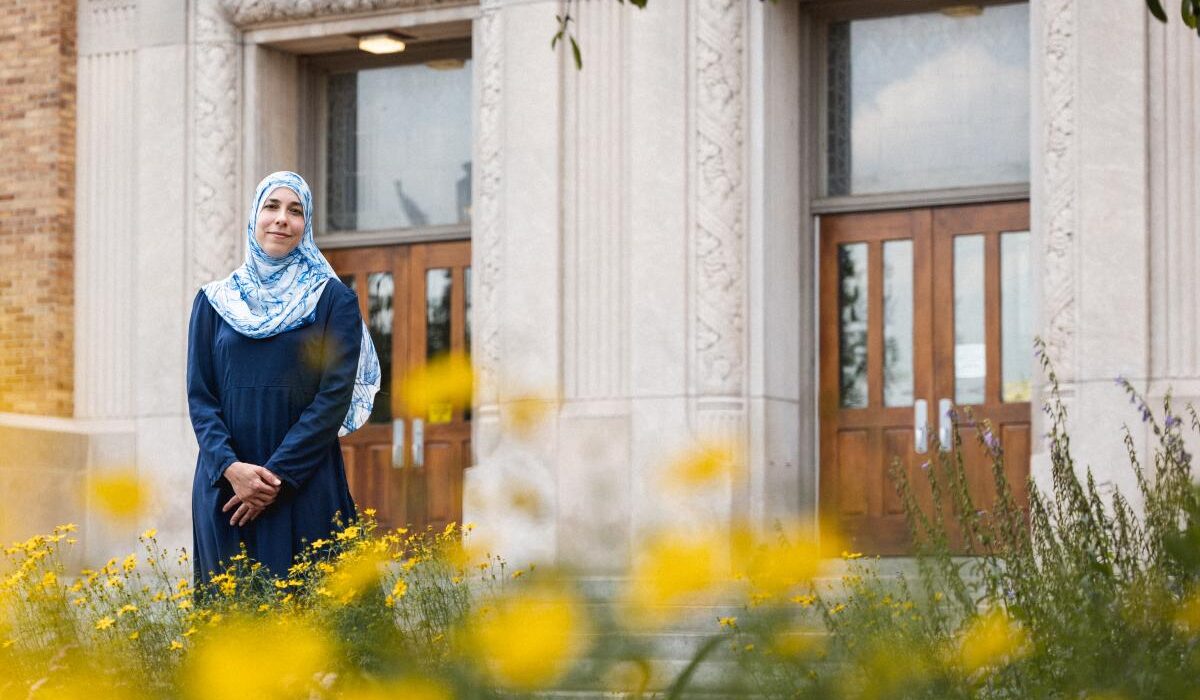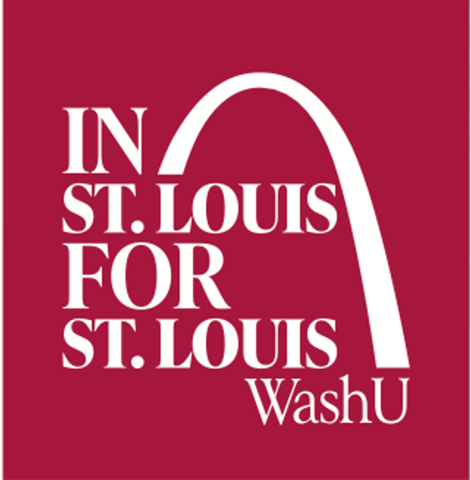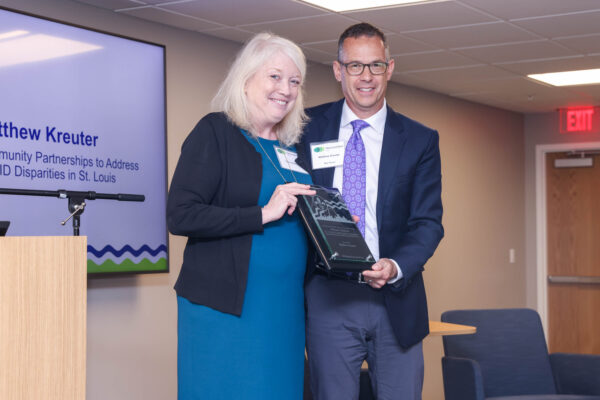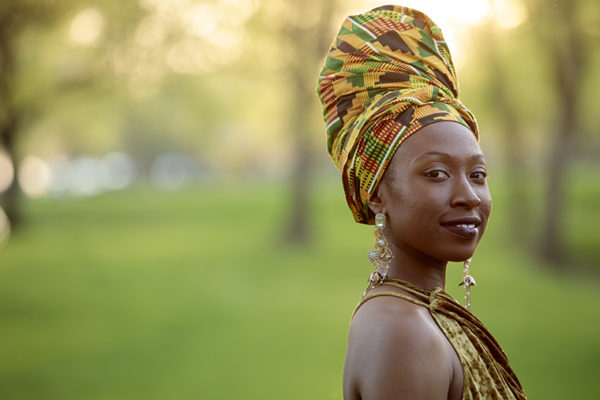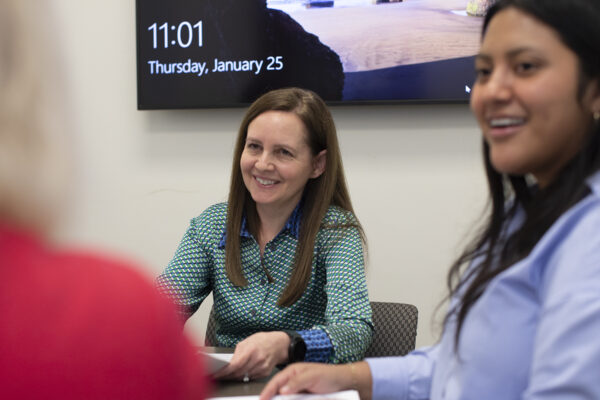For more than a decade, Rowhea Elmesky, an associate professor of education in Arts & Sciences at Washington University in St. Louis, has worked with educators and students in University City School High School to create a culture of trust, respect and shared responsibility. The result: a positive learning environment where suspensions are down, attendance and engagement are up and students say they feel heard and valued.
“Honoring the heart — that is what we’re talking about here,” Elmesky said. “And that is not what we hear about very often in education. We hear about test scores. We hear about all of the things related to academics. But we forget that academics are connected to the emotional. So when students are feeling valued and cared about, they are going to learn better.”
Elmesky was honored at the 2024 Confluence Symposium April 10 at the .ZACK Theatre. She received the William H. Danforth St. Louis Confluence Award, which recognizes researchers and community partners who work together to address regional challenges. Jack Kirkland, an associate professor and a 54-year veteran of the Brown School, also was honored with a lifetime achievement award for his long-standing work in East St. Louis, Ill., and his current project in Cahokia Heights, Ill.
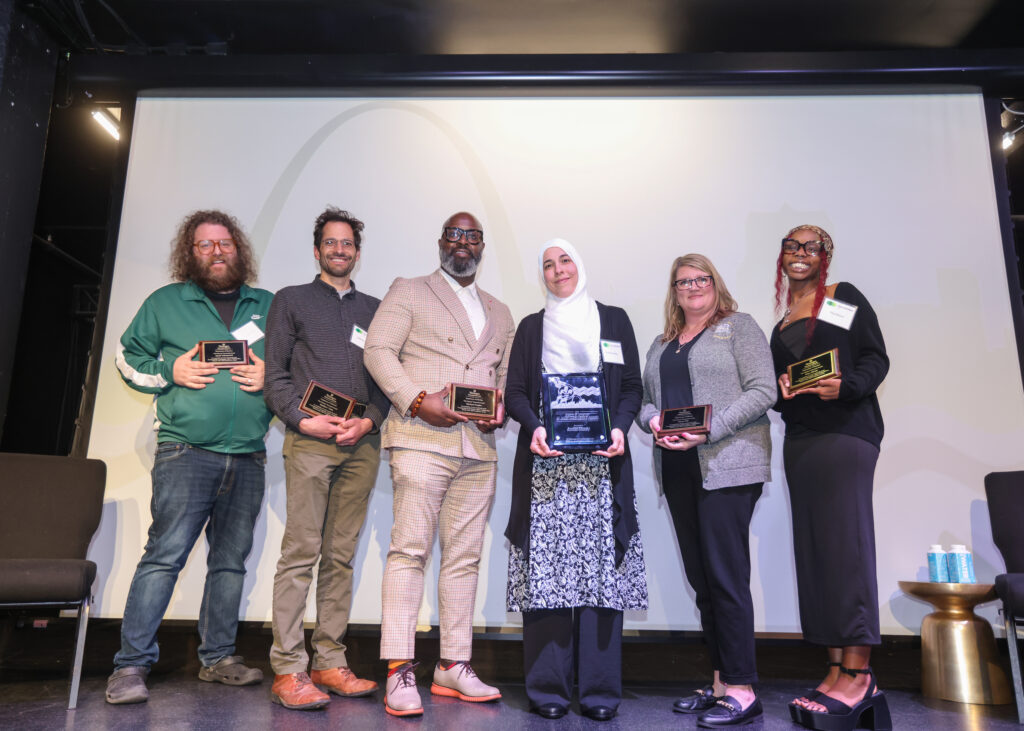
“In academia, our focus is often on external funding awards, publication acceptances and journal impact factors. These are important and, with this award, we have an opportunity to also focus on community impact,” Provost Beverly Wendland said. “Purposeful and intentional engagement with the community around us, paired with innovative and exceptional academic research, can create real, tangible change in people’s lives.”
That certainly is true for U. City High School Principal Michael Peoples, recent alumna Kaya Blount, restorative justice instructor Matt Tuths and district administrator Susan Hill, who joined Elmesky on stage to discuss their decade-long collaboration, which started shortly after the killing of Michael Brown in Ferguson.
“When I first started with the district, my impression was that there was a lot of pain, misunderstanding and mistrust,” Elmesky said. “It was across the board — teachers to administrators, students to teachers, students to students. So it became a question of, How do we go in and make a difference?”
Elmesky and her then-graduate student Olivia Marcucci, now an assistant professor of education at Johns Hopkins University, immersed themselves in the school. Implementing a collaborative critical research model, they led listening sessions; held research circles, where classroom videos were collectively reviewed with teachers and students; introduced restorative justice practices; and tracked outcomes.
“What Rowhea brought to our school district was identifying a problem, really looking at quantitative and qualitative data and, based on that data, coming up with specific action steps we could implement,” Hill said. “Based on her work, we gradually shifted our policies to being less punitive and more restorative.”
The school introduced daily restorative listening circles to build relationships, promote student well-being and address harm. More recently, it launched a restorative justice class, the first in the state. Since the launch of the partnership, school suspensions have plummeted 41%.
In addition, teachers and students both report increased levels of respect and trust for one another.
“A decade ago, a student told me, ‘Something we should change is the student-teacher relationships … we’re human.’ Now a decade later, there is a new rhythm in the building,” Elmesky said.
Peoples agrees.
“We are not perfect, but I am confident that 95% of our students would report that they have a positive relationship with at least one adult in our building that they know they can go to,” Peoples said. “This journey that we started together has resulted in a culture that centers students while promoting safety and accountability.”
Committed to improving health, eliminating disparities
More than 65 faculty members, representing every university school and working with some 600 community partners, applied for this year’s award. A selection committee selected 10 finalists who demonstrated impact, innovation and deep engagement with the region. The other finalists are:
Ellis Ballard, an assistant professor of practice at the Brown School, who has partnered with 43 organizations to develop new methods and tools to examine and mobilize systems change.
Kelly Harris, an assistant professor of occupational therapy at the School of Medicine, who works with the Jennings School District, Healthy Kids Express and the Asthma and Allergy Foundation of America–St. Louis Chapter to develop and implement interventions to support children with asthma.
Patty Heyda, an associate professor at the Sam Fox School, who maps the politics of inequality in Ferguson and north St. Louis County in her book “Radical Atlas,” which will be released this summer.
Elizabeth Hubertz and Tara Roque, of the School of Law’s Interdisciplinary Environmental Clinic, who released the 2019 study “Environmental Racism in St. Louis” and now work with community members to advocate for laws and policies that improve the safety of rental housing.
Jack Kirkland, an associate professor at the Brown School, who collaborates with Cahokia Heights residents, schools and government officials to address poverty and boost educational outcomes and economic mobility.
Trish Kohl, a professor at the Brown School, who works with Parents and Children Together-St. Louis (PACT-STL), to convene medical, public health and social services organizations to reduce referrals to Child Protective Services and to improve well-being for children and their families.
Shannon Lenze, an associate professor of psychiatry at WashU Medicine, who created a model to reduce preterm birth rates among Black women by training community collaborators to address perinatal depression.
Bruce Lindsey, the E. Desmond Lee Professor for Community Collaboration at the Sam Fox School, who leads The Divided City, an urban humanities initiative that has spurred collaborations between the humanities and architecture, landscape architecture and urban design, ranging from drone photography for neighborhood planning purposes to poetry and storytelling nights focused on placemaking.
Susy Stark, a professor of occupational therapy at WashU Medicine, who partnered with the St. Louis Area Agency on Aging to develop the Home Hazard Removal Program to reduce falls, which are the primary cause of injury, injury-related deaths and premature institutionalization in older adults.
